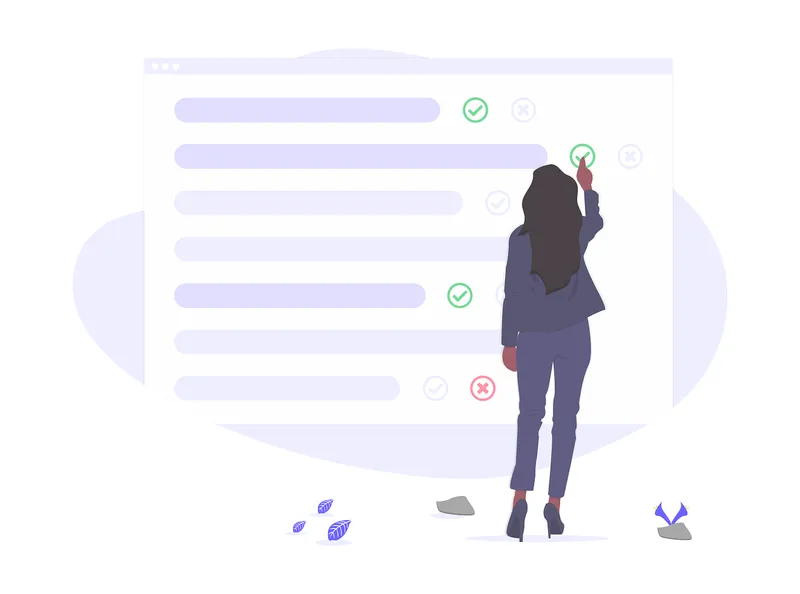7 Ways Your Customer Service Team Can Handle Customer Complaints
- By Hana Mohan
- Customer Support
- 09 Mins read

Your customer service team handles multiple requests on any given day and is one of the most vital links between your organization and its customers. Generally speaking, most of the complaints will be due to some kind of unmet expectation or miscommunication that couldn't be dealt with in the normal course of the sale.
Of course, it doesn’t matter how big or small the complaint may be. Either way, it’s up to the company to train each and every customer-facing team member to take all requests, complaints, and suggestions seriously and treat them with the same level of care.
How your customer service team can resolve customer complaints says a lot about your company’s culture and commitment to service excellence. Most customers don’t actually complain when they’re unhappy with a product or service. But when they do reach out, they expect satisfaction. In fact, as many as 63% of customers would switch to a different company if they had just one negative customer support experience with a brand.
While criticism can be tough to handle, the customer who chooses to speak with your customer service team is actually doing the organization a favor by highlighting the issue and giving the company a chance to make it right. By focusing on how to handle customer complaints effectively, you could turn more people into loyal customers. It might even allow your company to scale — businesses that excel in customer support grow revenues to 4-8% higher than their market’s average.
Equipping your team with the right software, tools, and training will help your company provide consistently exceptional service for your customers and learn something from each complaint. Here are 7 ways that your customer service team can handle customer complaints.
In this article:
- Set Up Multiple Customer Support Channels
- Thank Them and Apologize
- Keep Comprehensive Records
- Come to a Clear Agreement
- Company Policy Should be a Guideline and Not Strictly Enforced
- Make a Timely Follow-Up
- Create a Plan to Improve Future Response Times and Support
- Make SupportBee Part of Your Customer Support Strategy
- Frequently Asked Questions
1. Set Up Multiple Customer Support Channels
Having multiple customer support channels gives customers different ways to get in contact with your company. Although it may take more effort and additional agents to handle an omnichannel support system, this strategy makes communication easier for customers.
According to data from CM.com, most customers (69%) still prefer to use email to contact a company. However, another 39% and 33%, respectively, enjoy using email or face-to-face support methods, followed by the 21% who like using chatbots. Some customers may use more than one channel, depending on their specific needs when they want to contact a company.

Multiple channels create opportunities for continuous, reliable support across whatever platforms your customers use most, which can show your attentiveness to customers and help your business build stronger relationships.
2. Thank Them and Apologize
Customers usually don’t want to complain. What your customer really wants is to be heard and understood, and to receive some closure to their issue.
One of the best ways to handle a complaint at the outset is to simply listen clearly, avoid making excuses, and genuinely thank the customer for bringing the issue to your attention. Adding a sincere apology for the trouble this situation has caused them can also help ease any tension.
Make sure when communicating with customers that your team demonstrates active listening, which helps identify the issue accurately so the customer can get a reasonable solution and a personalized apology.
3. Keep Comprehensive Records
An effective customer service team has the right information available to them at all times. Good recordkeeping is a must. Some complaints may be due to a genuinely unique issue, but others may be clustered around a specific process concern or other common issues.
When a customer makes a new complaint, is there any record of a similar issue that a customer already brought to your attention? If your team consistently reviews data and determines a pattern of repeat issues, you can educate your entire support team to address similar customer concerns going forward promptly.
If it’s an issue requiring customers to take action, add documentation and guidance on the issue to your knowledge base so customers can find the help they need quickly. Additionally, it helps to keep customers in the loop, making them aware that you’ve identified an issue and are addressing it.
Then, notify customers when a resolution is available, either via a personal phone call from a customer support rep, an email announcement, or an alert in your customer portal.
4. Come to a Clear Agreement

Each customer is unique and will have their own perspective on their issue and what a satisfactory resolution looks like. Taking the time to understand exactly what outcome they are expecting is important. From there, your team can use their level of authority and company guidelines to accept the customer’s request or offer an alternative resolution.
In some cases, your front-line customer support representatives may need to escalate a request to a supervisor or get approval from management before offering a resolution. Keeping a customer waiting on hold for an extended time can harm the customer’s perception of the overall support experience, so be sure that there are clear processes in place for expedited escalation and approval.
Once there is alignment on the request, it can be entered into the system along with any management approval requests or system tickets. Providing the customer with a confirmation email is a great way to clarify the complaint resolution for both parties.
5. Company Policy Should be a Guideline and Not Strictly Enforced
One of the most dreaded words a customer can hear is the “Sorry, it’s not company policy” line. Of course, companies need policies to protect themselves and prevent situations from escalating to an unreasonable level. That said, company policy should be a guideline and not strictly enforced.
Give your customer service team some flexibility in developing resolutions to satisfy customer concerns, within broader company policy guidelines. By doing so, you’ll give your employees a sense of empowerment and ownership — and happy, satisfied employees tend to provide better customer service, which means your customers will be happier, too.
Placing trust in your employees and granting them the necessary authority to make decisions in resolving complaints just might be a key competitive differentiator for your business in a world where customer service rankings sit at an all-time low.
6. Make a Timely Follow-Up
Regardless of whether a complaint was closed or remains open pending resolution, you should always follow up directly with the customer about 24-48 hours after an interaction with your customer service team. Doing this shows that your team is proactive and ready to solve a problem and allows you to share updates on any progress or learnings. If the follow-up message comes directly from a manager, it can have an even bigger impact on letting your customers know that you value their business.
Customer complaints are a part of doing business, and the more you sell, the more complaints you are likely to receive as time goes by. A team that is well-trained and familiar with effective ways to resolve customer complaints can truly differentiate your service and lead to more satisfied and loyal customers.
7. Create a Plan to Improve Future Response Times and Support
Developing a customer service strategy is your first step in handling customer complaints. The next step is to continue improving your strategy to meet customer needs as they shift throughout their time with your company.
That means consistently ensuring that you’re meeting customer expectations and making them happy. Digital tools can help your overall strategy tremendously by collecting data and feedback that allows you to see your customer support strengths and weaknesses. A few must-have tools for modern companies include:
- Customer Relationship Management (CRM) Systems: CRMs keep all customer interactions in one place, helping teams provide personalized and efficient service. You can use them to track customer history, simplify communications, and make follow-ups easier.
- Feedback Tools: Use feedback tools to gather customer opinions and suggestions to identify areas for improvement.
- Help Desk Software: Help desk software organizes and tracks support requests to keep your team on the same page and ensure no messages fall through the cracks. With 67% of customers expecting ticket resolution within three hours, this software is almost non-negotiable in today’s business landscape.
Many of these tools can help you track customer service metrics. The table below shows some of the most common metrics and what they measure.
Tools are an investment, but they’ll help your customer support scale to new heights, offering quicker and more relevant solutions for every customer interaction.
Make SupportBee Part of Your Customer Support Strategy
You will love the improved replying experience we rolled out recently!
— SupportBee (@supportbee) September 9, 2024
1. Improved drag and drop for images and other files.
2. New options for formatting code blocks.
3. Alignment toolbar for images dropped in text.
4. More reliable drafts feature.
Thanks to @ckeditor for v5! pic.twitter.com/jzIrd5fvbZ
With the right tools and a dedicated strategy for putting customers first, your company can provide top-notch support and build long-term relationships with customers.
SupportBee can help you manage your customer base every step of the way, whether you want to streamline support ticketing, provide a comprehensive knowledge base for self-service, or give customers easy access to their communications through a customer support portal. Start your free 14-day trial of SupportBee.
Frequently Asked Questions
What are the best practices for handling customer complaints effectively?
Customer service agents should be trained to handle complaints quickly, fairly, and personalized to each customer. Showing empathy and respect is crucial, so active listening and offering a sincere apology can go a long way. Offer clear, actionable solutions, and follow up with customers to make sure you’ve met their needs.
How can customer service teams turn complaints into positive customer experiences?
View complaints as an opportunity to improve your products and services. Customers don’t complain just to complain, generally. Instead, they want to let you know what they need and expect so you can provide a solution. Show customers you value their feedback by making meaningful changes based on their feedback.
Why is it important to address customer complaints quickly and professionally?
Quick and professional responses show customers that you value the time they spend contacting your company. Delays or poor handling of a customer support request can turn even the most loyal customers away. When you respond promptly, you can also handle issues before they escalate, which can save your support team time and give customers a positive impression of your brand.


